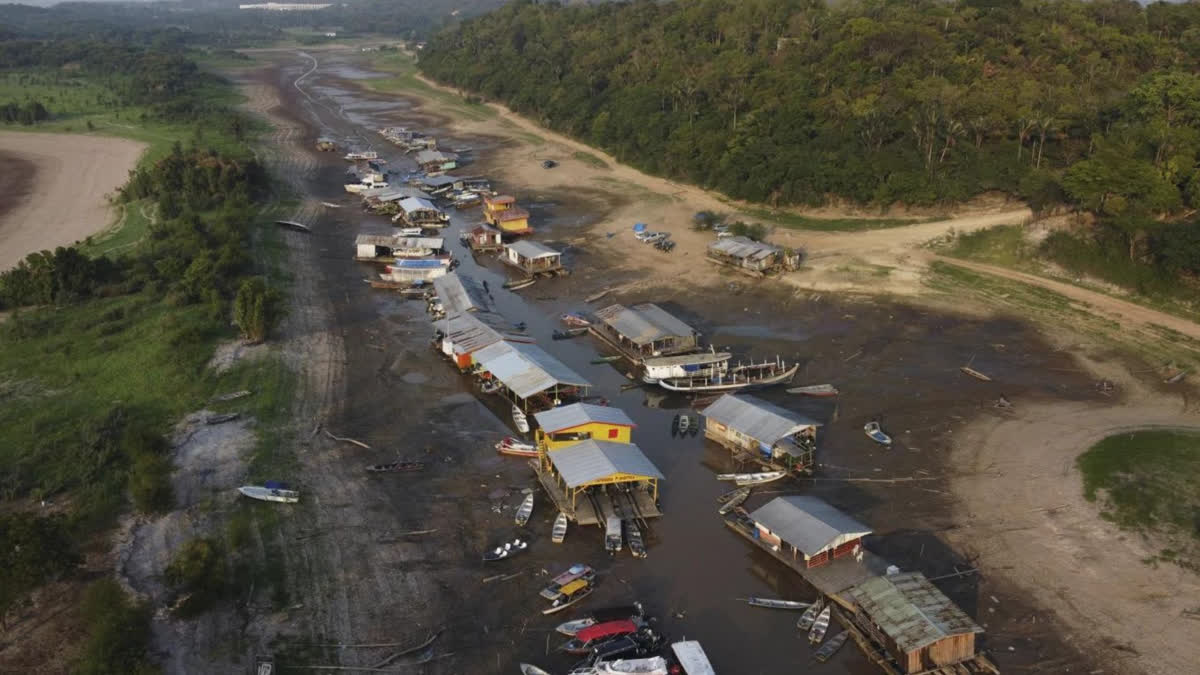Manaus (Brazil): The Amazon is facing an unprecedented drought that is projected to continue affecting the region at least until mid-2024. The lowest water levels in 121 years of river-level records have been recorded in the city of Manaus.
Vast areas of the Amazon River's bed have been exposed, and more than 150 dolphins died in a lake where water temperatures reached 39C (2C above human body temperature). Human populations along Amazonian rivers have been isolated, stripped of their livelihoods and lack basic necessities.
This year has brought three kinds of drought simultaneously, resulting in practically the entire Amazon region being affected. The forecast for November 2023 through January 2024 is for drought across almost the whole region. Some projected rain in Peru may help with water levels in the Amazon River, but the wider region remains exposed to drought stress and forest fires.
The eastern El Nino-There is an eastern El Nino caused by warm water in the eastern part of the equatorial Pacific Ocean, as occurred during the Godzilla El Nino of 2015, and the water there is even hotter than it was in 2015. The 250-km/hour winds of Hurricane Otis that devastated Acapulco are testament to the strength of warming in the eastern Pacific.
In addition to drought in the northern Amazon, the effects of an eastern El Nio extend to the southern part of the region, as was evident during the 2015-2016 forest fires in Brazil's state of Acre and is now reflected by record low water levels in the Amazon tributaries from the southern part of the basin, including the Madeira River where electricity generation had to be completely halted at Brazil's fourth largest hydropower plant, the Santo Antnio Dam.
The central El Nino-The hot water in the eastern Pacific is now expanding to the central part of the ocean, where it provokes a central El Nio as occurred in 1982 and 1997. A central El Nino results in an intense drought in the northern Amazon, with the state of Roraima on Brazil's border with Venezuela being the most famous for forest fires. The great Roraima fire in 1997 burned around 1.25 million hectares of forest.
The 1982 El Nino, in addition to killing trees in the Amazon, killed more than 200,000 people in Ethiopia and neighbouring African countries through drought. The 1995 report of the Intergovernmental Panel on Climate Change (IPCC) indicated that something had changed in the global climate system making El Nios more frequent since 1975. The 2007 IPCC report it became official that global warming will cause more frequent El Nio-like conditions.
This completely changes the political and moral context of these events because global warming is increasing due to human actions, and the responsibility of each country and even of each individual can be quantified. The probability of the water in the central Pacific Ocean returning to a normal temperature is projected to be essentially zero until January-March 2024, and to not reach 50% until May-July 2024.
The Atlantic dipole- The third type of drought hitting the Amazon is from an Atlantic dipole, where a patch of warm water forms in the tropical North Atlantic Ocean while there is colder water in the South Atlantic. An Atlantic dipole causes drought in the southwestern part of the Amazon, as happened in 2005 and 2010. The forest fires in Acre in 2005 and 2010 are testament to the power of the Atlantic dipole. The present Atlantic dipole is projected to last until at least June 2024.
Climate forecast for the Amazon until 2100-The projections for changes in Amazonia's climate by the year 2100 are truly catastrophic. Many of today's children will live to see it. Global mean temperature has so far increased by 1.2 C since the beginning of the industrial revolution in 1750, and the impacts of this are already apparent around the world, including in Amazonia.
If all countries fulfil their commitments, such as those under the Paris Agreement, global mean temperature would increase to around 2.7 1 C above the preindustrial mean by 2100. However, if emissions continue to increase following current Intergovernmental Panel on Climate Change (IPCC) shared socioeconomic pathways (SSPs), it would reach more than 4 C.
These projections only consider intentional human-caused emissions unintentional emissions, such as forest fires and soil warming, are likely to increase as well, and if a tipping point is reached and unintentional emissions explode outside of human control, the situation would be far worse. History does not end in 2100, and temperatures would continue to rise.
Average global temperature increases are always lower than increases in a place like the Amazon because 70% of the planet is covered by water, and air temperature increases are smaller over oceans than over continents. The potential 4 C increase in the global average implies an increase of the maximums by more than 6 C throughout the Amazon. At the same time, water will be lacking with the number of consecutive days with rain per year increasing by up to 40 days or more.
